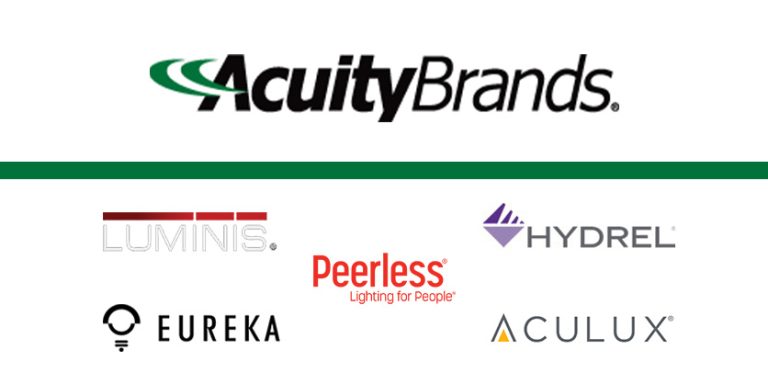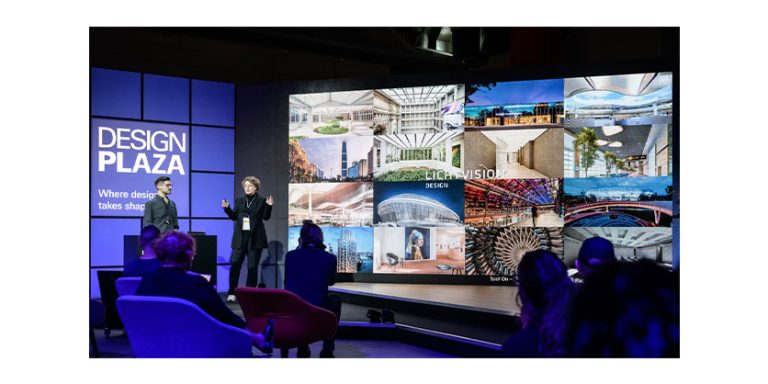Quality of Light Matters – Here’s Why the Importance of Light Quality in the Age of LEDs

Summary
- LED technology has revolutionized lighting with enhanced features and longevity.
- Quality metrics such as CRI and CCT are essential for optimal performance.
- Compatibility with dimmers and specific application needs must be considered.
- Standards ensure reliable product comparisons and informed purchasing.
- DLC’s QPL ensures high-quality, energy-efficient lighting options.
DLC Educational Series
Remember the old jokes about how many (insert stereotype here) does it take to screw in a light bulb? The premise was that lights were so easy to install, that anyone could do it. Fast forward to today after an explosion of LED technology and market transformation. There are many reasons these jokes won’t get the laughs they used to, at least from those of us in the lighting industry.
In some cases, the switch to LED lighting is a simple swap, but as more products and controls become available, the application and surrounding environment must be taken into consideration. Homeowners and businesses often ask, “how long do LED lights last?” The longevity of LED lights, which is typically 9-14 years, is one of their most appealing features, but understanding the factors that influence their lifespan is crucial for making an informed decision. LED lights are renowned for their durability, often outlasting incandescent and fluorescent counterparts. However, not all LEDs are created equal, and their longevity can vary significantly between manufacturers and models as well as by how they are used.
Unlike traditional lighting options, LEDs come with a range of features and specifications that cater to different applications, whether it’s for rendering vivid colors in retail spaces or energy efficient dimming in residential settings. Knowing what to look for in terms of quality, controllability, and energy efficiency can help you select the best LED light fixtures and bulbs to suit your specific needs.
Here are some questions about LEDs answered by our experts at the DesignLights Consortium (DLC):
What do you need to look for when purchasing an LED light fixture or bulb?
Unlike most legacy lighting options, LEDs can have many more features to consider when selecting the best lights for your purpose. Each application will have its own needs and understanding your specific needs is the place to start. LED fixtures and bulbs should be energy efficient, controllable, and high quality. For example, if your application calls for vivid color appearance to show colors of finishes in a space, look for high color rendition performance that meets your needs. Color Rendering Index (CRI) is one measurement (on a scale of 0-100), of how well the light source renders the color of objects compared to a reference light source. Natural light from the sun is considered to be 100, and as CRI values move away from 100 the colors in the space may seem distorted or unnatural. Most fluorescent and LED lighting options offer CRI between 80-90. Some LEDs are getting close to a CRI of 100 today, and older high-pressure sodium street lights are at about 25, but these vary depending on the spectral characteristics of the light and color of the object. (This is why a red car may look great under daylight, and more muted red or brown under older streetlights.)
If the light fixture or bulb will be used on a dimmer, make sure the fixture or bulb is not only dimmable, but it is also compatible with the dimmer being used. When it comes to how long LED lights last, their lifetime is typically much longer than incandescent and fluorescent, but it can vary between manufacturers. It’s good to remember that not all applications are alike and not all LEDs are suited for all applications.
Why is good lighting important?
We are surrounded by light every day both indoors and outdoors, day and night. Whether you’re a homeowner, a grower looking for LED grow lights for your indoor farm, or a business owner looking to save money on your energy bill, good lighting is important. Good lighting saves energy, helps people perform tasks, and meets the needs of the application or building. Additionally, as indoor farming grows, good lighting is important for successful and consistent crop production. Good lighting is accompanied by transparent data on the product spec sheets so that end users can make informed decisions when they are evaluating lights for a purchase.

What are lighting standards and why do we need them?
Standards allow for apples-to-apples comparisons between products, removing the guess work from purchasers. Standards help make sure purchasers get what they pay for and, on a larger scale, gives electric utilities confidence in the energy-saving products they help their customers invest in as part of energy efficiency program rebates.
Industry developed, consensus standards enable an industry and its customers to have agreement on how and what to measure to accurately and effectively communicate product performance and other attributes. As the industry and technology evolves and knowledge increases, standards are continually revised to reflect new capabilities, trends, and scientific knowledge.
The DLC’s solid-state lighting (LED) program is home to the largest and most influential list of high-performing commercial lighting products in the world. The DLC’s Qualified Product Lists (QPLs) only include products that have been rigorously tested using industry standards and our Technical Requirement thresholds. This helps achieve one of our key initiatives: to accelerate the installation of energy efficient, better quality lighting for all people.
Are LEDs dimmable?
Generally, yes, but not all LED products are dimmable. Today, almost 95% of the products on the DLC Hort QPL and nearly 100% of products listed on the DLC solid-state lighting (LED) QPL are dimmable. Those that aren’t are generally intended for lower output or specialty applications, where dimming may not be used. An LED fixture or bulb must use a compatible dimmer for proper operation. Without this, poor dimming performance might be observed, including flickering, dropping out, or shortened product life. (Read more about the value of dimming in commercial buildings on our blog.)

What has improved with LEDs?
What hasn’t improved with LEDs?! Today’s LEDs offer best-in-class options for basically any criterion you’re looking at. (However, this also means it can be harder to choose the right lights for your needs.) LEDs now surpass other options in light output and longevity and they also use less energy.
One of the largest improvements has been in the color appearance of the light from LED chips themselves. Color appearance is referred to as Correlated Color Temperature (CCT) and is expressed in comparison to the color of an object heated to the point of glowing and measured in degrees Kelvin (K). The color of the glow at lower temperatures (2200K to 3000K) has a “warmer” appearance and as the temperature increases 4000K to 6500K), the light appears “cooler” or bluer. Early on, the LED chips used high CCT and tended to have a cooler (bluish white) hue. As technology has evolved, we can now select from a variety of colors, including white options ranging from (2200K to 6500K).
The small size of LED chips also results in more choices in fixture size and much more granular choices in light output. Advanced optical solutions tailored to LEDs can also result in better beam control and more comfortable appearance, with the understanding that tradeoffs in energy efficiency and cost occur. For example, adding a lens or shield to control unwanted glare or send light in a particular direction also limits the total light output from a fixture, which reduces its efficacy (lumens produced per watt input).
Why do LED colors seem off sometimes?
LEDs color may seem off if the color appearance is not a neutral white. In addition, incandescent and halogen bulbs, which we may be used to, are not a neutral white. (This is not a problem specific to LED, it has also occurred with some compact fluorescent and fluorescent lamps in the past). Many LEDs provide white light by using phosphor coatings to shift the underlying blue LED or by mixing multiple different LED colors, like red, blue, and green. It is important to check the color appearance before purchasing an LED light.
Why do LEDs flicker on camera?
All types of lighting flicker to some extent, but not all are as noticeable. Sources using heated filaments, like incandescent lights, do not seem to flicker as much (or sometimes at all) because the heated filament temperature reacts more slowly to changes in electrical currents. An LED’s modulation is dependent on the connected driver. If the LED’s modulation is different from the camera’s frame rate, you can more easily observe the difference.
What quality metrics are important for lighting? How can you tell if an LED is good?
Quality metrics such as color appearance (correlated color temperature or CCT), color rendition, rated life, and glare control are going to depend on your specific application needs. Knowing what your application specific priorities are will help inform what quality metrics to evaluate to ensure the LED lighting you install is meeting your needs.
How do I know if an LED needs to be replaced?
Monitoring and ensuring you’re hitting your target light levels along with other key application priorities (e.g. color appearance and color rendition accuracy, if you’re a retailer wanting to keep colors vivid, and more) using sensors and controls will keep you in the loop about how your lights are performing and if/when you will need to replace them.
In conclusion, when choosing LED lights, consider features such as energy efficiency, control options, and color performance to ensure they meet your requirements. For instance, if precise color accuracy is important for your application, select LEDs with high color rendition indices (CRI). Additionally, check for compatibility with dimmers if you plan to use dimmable LED fixtures. You can view CCT and CRI color metrics as well as controllability features for each product on the DLC qualified product lists (QPLs). By carefully evaluating these aspects, you can ensure that your LED lighting solution not only lasts long but also provides optimal performance for your specific application.
DLC Contributors to this blog include Kasey Holland, Liesel Whitney-Schulte, Leora Radetsky, and Stuart Berjansky.









